I emerged from the subway into evening air that was tepid and stagnant, like it wasn’t there at all. But people were wearing coats and jackets. And the trees were barren, every single one of them.
Those aren’t cherry trees, I reassured myself and continued my march eastward. Spring arrives in Kyushu earlier than in does in the rest of Japan. Spring arrived before you did.
I’d left Austin Saturday morning, according to the time on the clock there; there were only a few hours left of Tuesday in Fukuoka. The windlessness didn’t restore the four days my journey had deleted from the calendar—it was simply a stillness to which I aspired.
The trees along the drawbridge of the reconstructed Shiomi Tower were unmistakably Prunus serrulata, but although they were bathed in pink light, not a single one of their blossoms was open. Only a single one of Ohori Park’s specimens, a weeping sakura in an inconspicuous spot, had entered a state of bloom worth mentioning.
People crowded around it, their hope no longer lost. But I’m not so easily fooled.
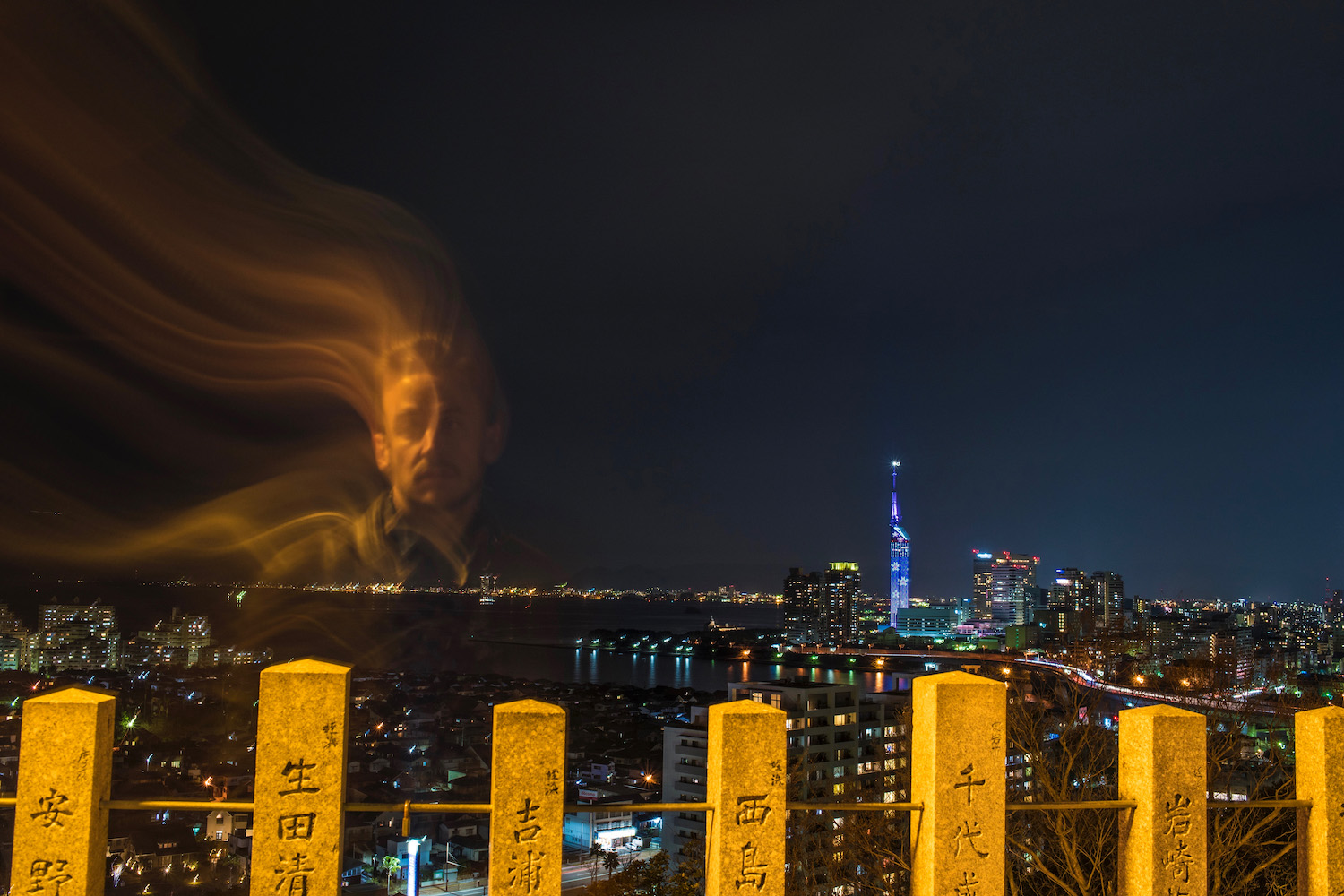
When I came to Japan for the first time three years ago, I arrived in the country (and in most every city I visited) at the peak bloom of the sakura; I took for granted that coming to Japan during “cherry blossom season” meant I would see more cherry blossoms than I cared to photograph.
In fact, Kyushu’s bloom was a week late, or more. “My parents tell me the winter here was harsher than normal,” Ryota explained, as he lifted a slice of pork and a tuft of noodles from the beneath a lemon slice floating on the surface of the liquid in his bowl. “But what can you do? We’ll enjoy Nagasaki anyway.”
I’d met Ryota in November, while waiting in Kathmandu for my flight to Lukla, where I completed an abbreviated version of the Everest Base Camp trek. He did the same one, but since he went without a guide I didn’t see him past the first night in Phakding, which was when I connected with him on Facebook and told him about my tentative plans to visit his native Kyushu at the end of March.
Back then, of course, the idea that I would permanently leave the United States seemed like a hissy fit; only a few weeks had passed since the election of Donald Trump.
But here I was four months later, the vast majority of my earthly belongings at my feet, the near-stranger sitting across from me only person I knew within 500 miles, the two of us slurping down citrus-flavored ramen in a restaurant I never could’ve found on my own as if it was something I did every day. The road frees you, if you can let go of how strangely freedom manifests itself.
Nagasaki, it turns out, has very few cherry trees anyway, which meant I could spend my two days there taking the city at face value, a courtesy of which my sakura-seeking had robbed Fukuoka. But in spite of all the beauty I experienced there, from morning at the atomic bomb hypocenter to sunset at Meoto Iwa Shrine, from boiling in the waters of the ocean-facing Yasuragi Ioujima Onsen to freezing as I looked down on the “third-best night view in the world,” tension was my dominant feeling.
History, of course, played a part in this—I don’t think I need to explain that. But that fact was the I’d approached Ryota in Kathmandu Airport mostly because I imagined myself sleeping with him one day; our wholesome two days together vanquished that delusion like the detonation of an a-bomb.
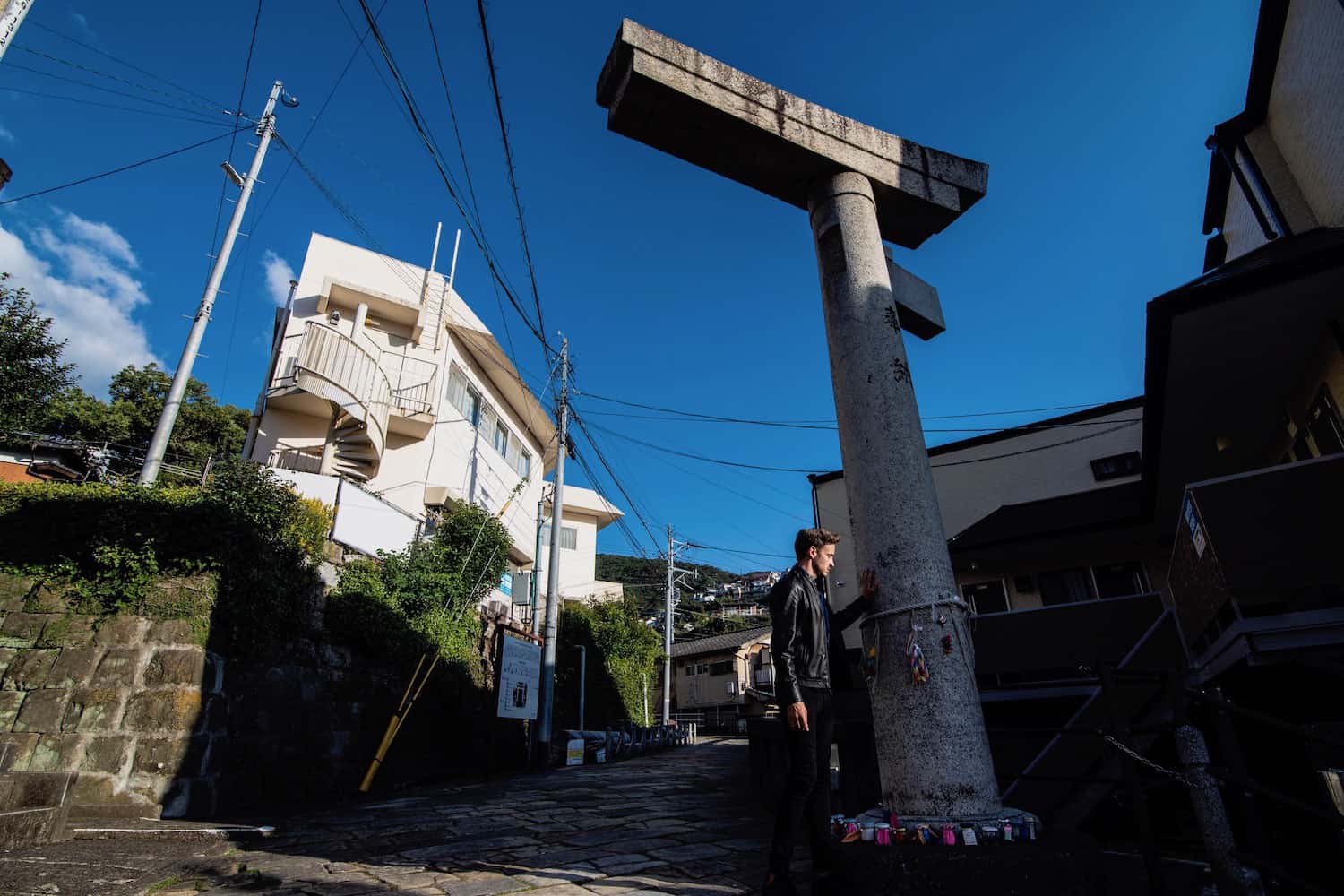
That was shitty of me, huh? Comparing my failed pursuit of an asexual person to the tragedy that came a few miles from killing his grandparents. You’re not alone in thinking this—I hesitated to write it.
But I clicked the “Publish” button anyway, just as I clicked my camera’s shutter in Kumamoto the day after I left Nagasaki, the castle in front of me still in ruins a year to the day after an earthquake most of the planet never even heard about.
When I studied the way the rocks spilled out of the walls, I could almost see the face of someone vomiting. My fellow human beings, for their part, were distracted by the food markets at the base of the fortress and the statues of city mascot Kumamon and the instinct to sit on blue tarps and take part in hanami, in spite of the still-scant extent of the cherry blossoms.
Empathy, of course, is never anything more than an approximation. But in the absence of people showing emotions congruent with reality, the pained expression of Kumamoto Castle itself presented my only clue as to how last year’s tremor must have felt.
It was a sunny Saturday in Kumamoto, but too cold to spend more than a few moments in the shade. Objectively, the weather was much better than it had been four days before in Fukuoka, but the stillness I’d felt stepping out of the subway seemed as far away as the scorched Earth of Texas, as unfathomable as the idea that I would ever again have a home in my country, which was now destroyed in its own way.
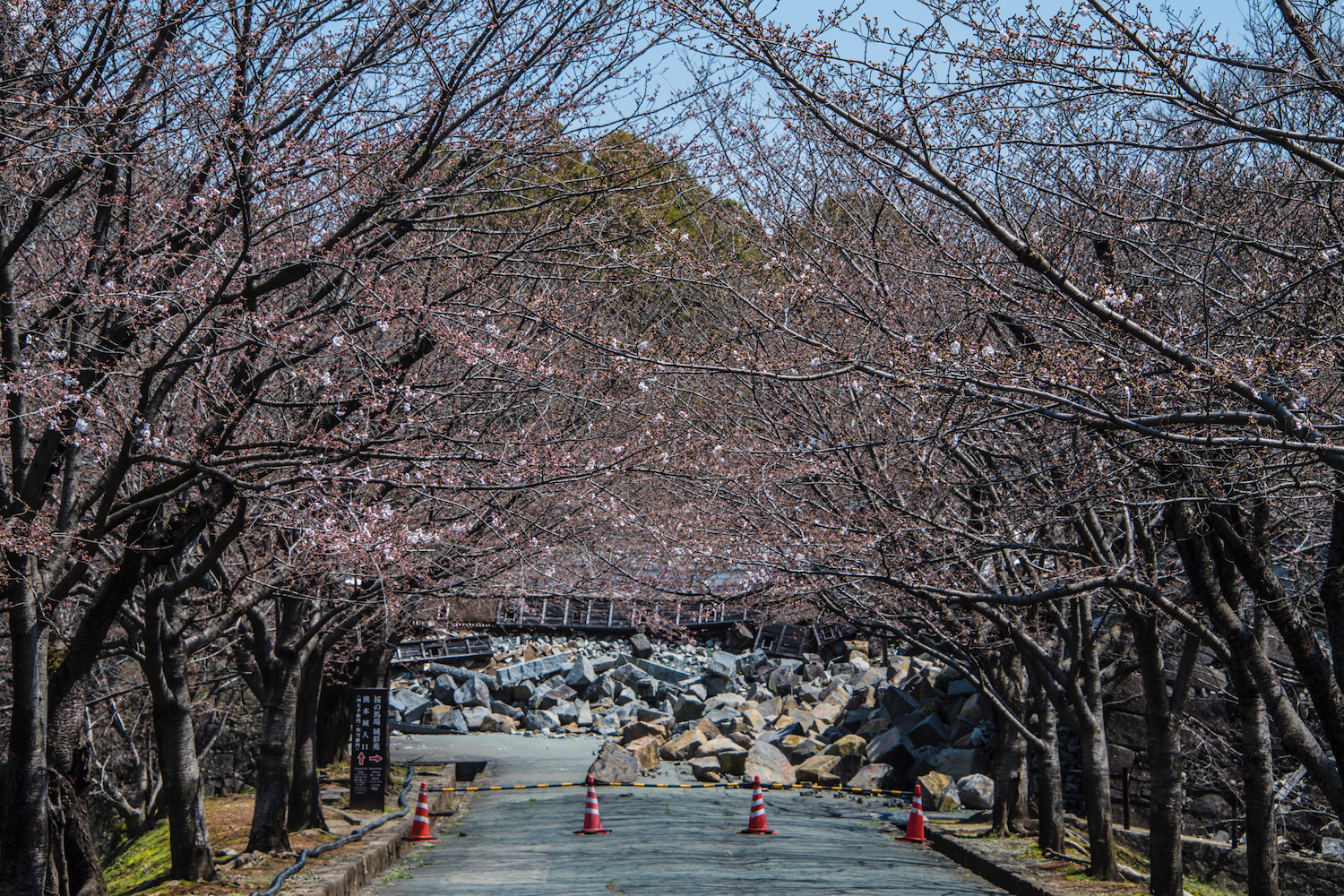
I’m not sure exactly when I actually left Kyushu. The Shinkansen travels fast enough that by the time I thought to pay attention to my surroundings (it’s smooth enough you forget you’re on a train), I was already two prefectures into Honshu.
Specifically the town of Asa, which is where Saori boarded the train. We exchanged a hug and a few words before the train departed, but spent most of the journey to Shin-Iwakuni in silence—Saori is not nearly as confident speaking English as she should be, given her admirable linguistic faculties.
We were on our way to Kintai Bridge, a place someone I met on my trip three years ago had invited me to visit. I declined, stupidly, and images of the 16th-century bridge surrounded by sakura have haunted me ever since.
As I plotted out my Kyushu trip I remembered I’d promised Saori, who’d guided me through Shikoku back in February, to visit her if I ever passed through Yamaguchi prefecture, which is also where the bridge happens to be located.
Indeed, it wasn’t until a few prefectures east of Yamaguchi that the relevance of our rendezvous in this story became relevant. Saori had given me a gift, you see, which I’d put in a locker alongside my larger piece of luggage upon arriving in Himeji, whose castle sits about 90 minutes from the Kintai Bridge via Shinkansen.
Waiting on the platform for my Osaka-bound Hikari to arrive, having spent a couple hours at Himeji Castle, I set the gift down and didn’t think anything else of it, as you do in Japan. (The saying goes that you could drop a suitcase full of money in Shinjuku Station, and the only fate that would befall is being kicked, gently, out of the way.)
Unfortunately for me (and for my untainted image of Japan), some passerby clearly had a hankering for the two types of sake Saori had bought me: I looked down seconds before boarding to realize the paper bag had been snatched out from under me.
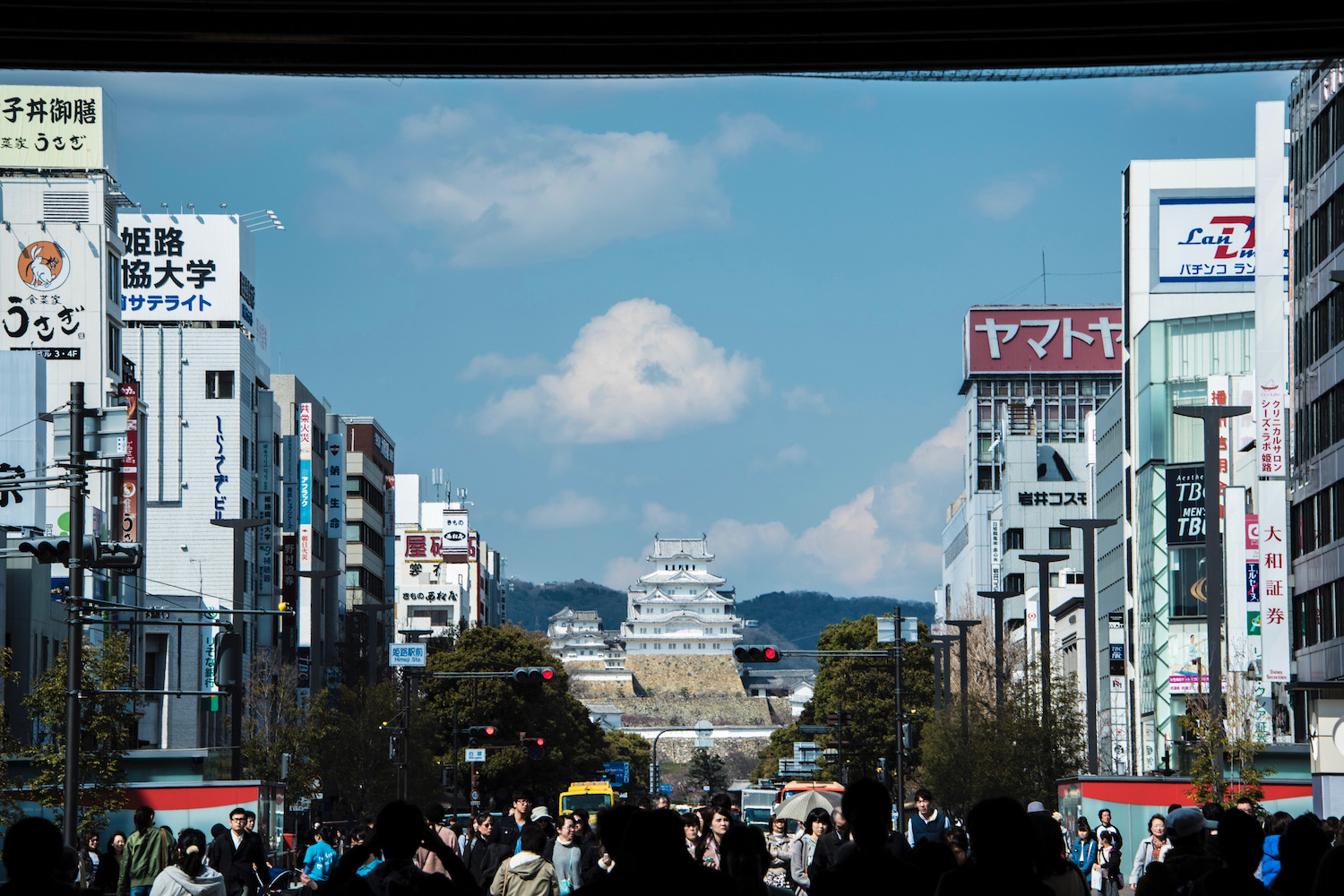
I beat myself about losing Saori’s gift the entire rest of the day, which I spent watching sunset at Osaka Castle and snapping night shots in Shinsekai and Dotonbori, in that order. I even had the staff of my hotel call the “Lost & Found” at Himeji station, entertaining the idea that someone might’ve kicked my bag out of the way, as the adage goes, only to have another benevolent passer-by turn it in—no such luck.
It wasn’t so much the booze, which I would’ve had to consume in less than 24 hours since I couldn’t take it on the plane to Bangkok with me, but the textile into which Saori had hand-embroidered the Japanese characters for my name.
They literally mean “Road, Wing, Human,” she’d explained to me, probably unaware of how relevant those words where to where I was in my life right at that moment. But I hadn’t thought to place the only part of her gift I’d likely keep into my backpack—I hadn’t even taken five seconds to look at it.
Guilt has been my emotional nemesis throughout the long process of saying goodbye to America—guilt over seeing my family even less than I currently do; guilt for leaving the battlefield instead of staying to fight; guilt about how immediately I knew my decision would be the right one, and how easy it was to execute, in spite of the four months that passed between those two extremities.
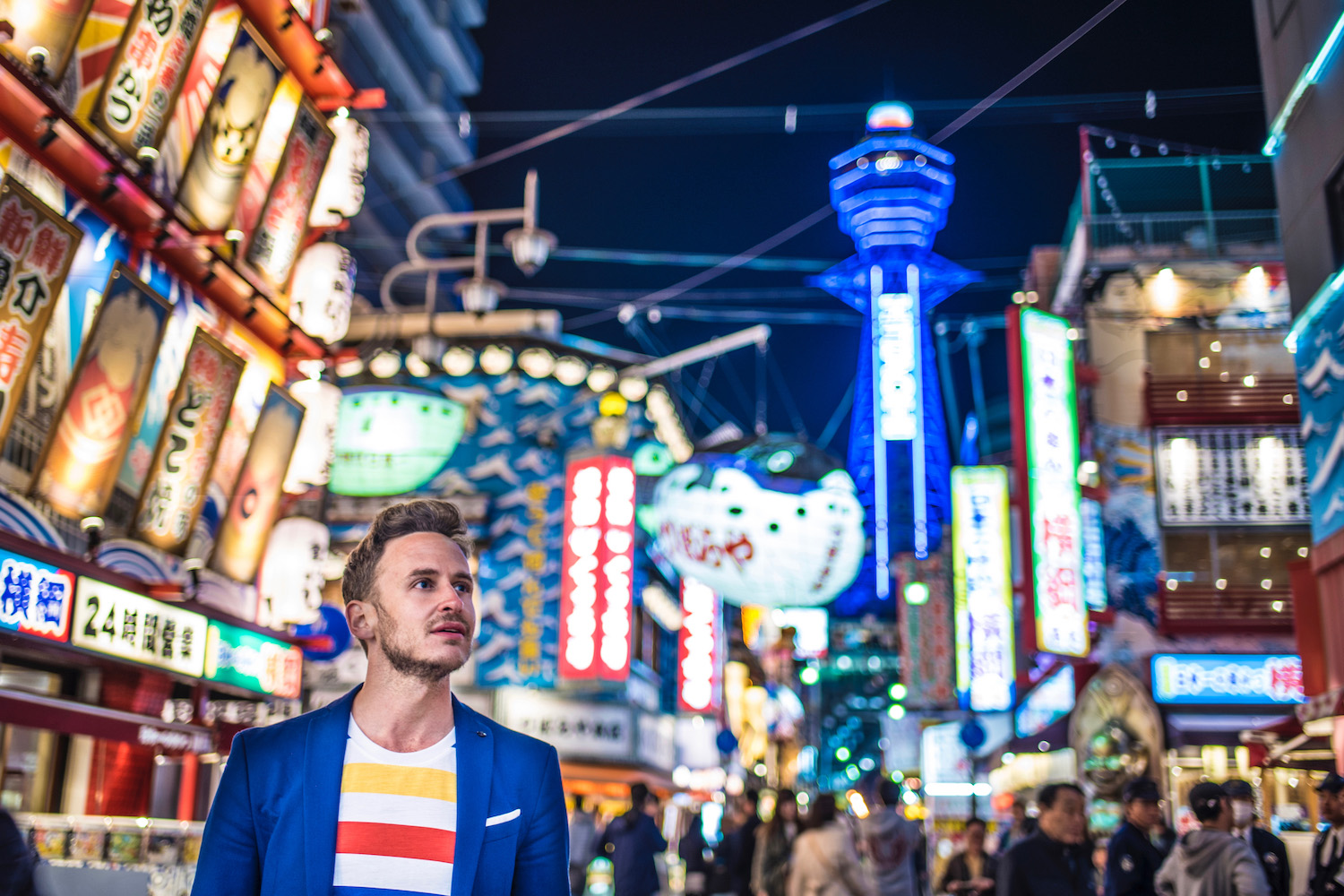
I arrived at Kyoto Station and took an indirect route, as indirect as the one that had flown me from Austin to Fukuoka over four days instead of the usual two, to the Philosopher’s Path. I remembered it as one of the best cherry blossom spots from 2014, but on April 3, 2017, it was perhaps the deadest grove of trees I’d seen on my whole trip. I felt beaten as I limped back in the general direction of the train station—and not just because of how fatigued my fast-paced trip had left me.
To be sure, it was less because I cared to see them again and more because they was on the way that I stopped in Gion and at Kiyomizu-dera, two places any Japan traveler worth their salt knows are no-go zones on sunny days in early April.
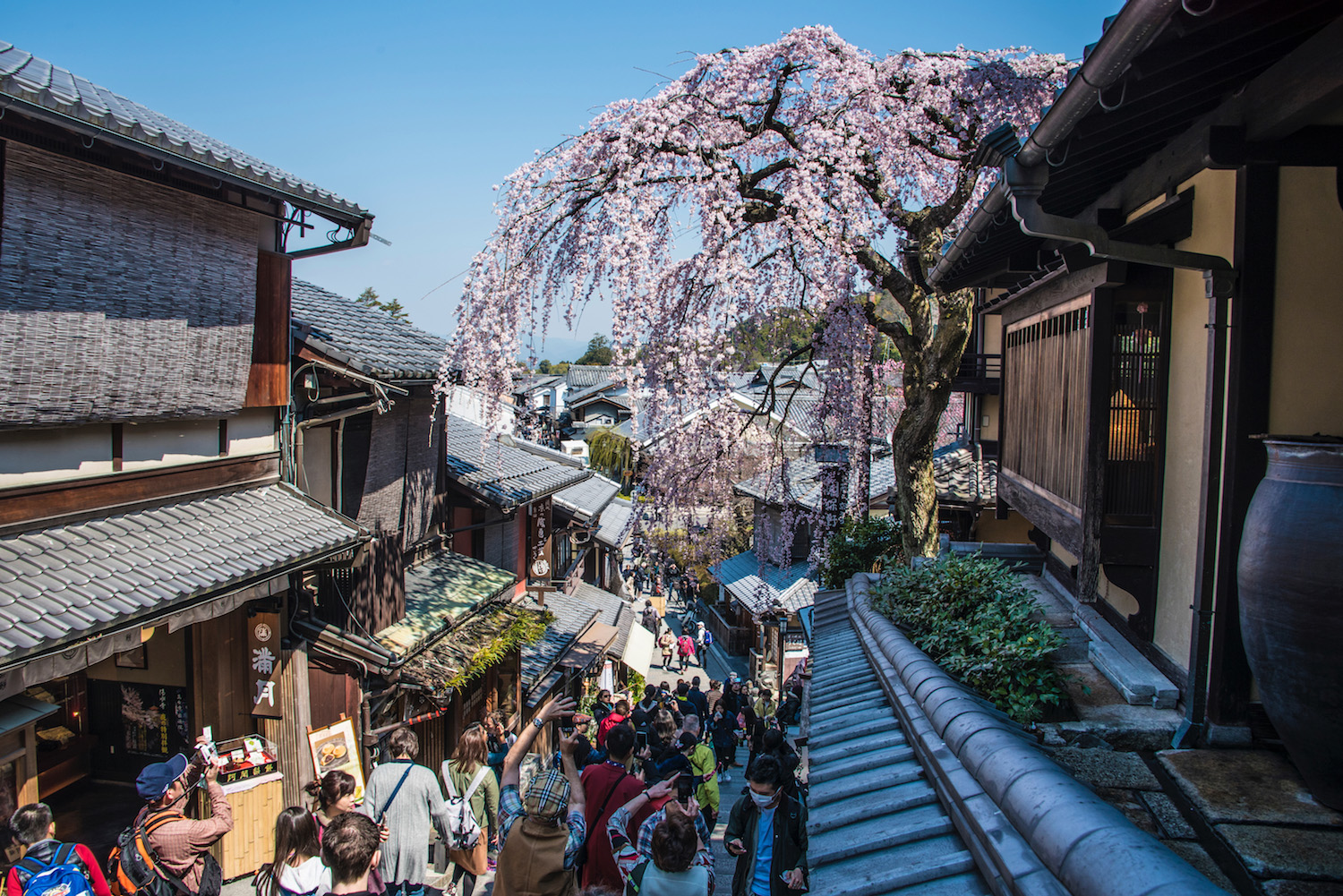
A couple hundred yards before Matsubara Dori dead-ended into the entrance of the temple, I looked left and noticed a massive weeping sakura in full bloom over a nameless side street. I stopped for a good 10 minutes to marvel at it, along with dozens of other who’d probably also been on their way to Kyoto’s most-visited attraction.
Kizyomizu-dera itself, unsurprisingly, was completely mobbed, so I did an immediate about-face and once again headed back toward the station. I walked due west until I reached the Kamo River, whose banks are the most pleasant north-south thoroughfare in Kyoto, but also the most obvious, which is why I’d purposely avoided them earlier that morning.
Ironically, all the cherry trees I passed along the shores of the stream were in full bloom, like the long row of them leading up to Shiomi Tower would’ve been had I timed my trip to Kyushu better. I quickly let go of my self-loathing, however, and reveled alongside the Chinese girls dressed at geishas at the spectacle blowing in the breeze around us.
The air was neither tepid nor stagnant, but that was OK: The tourist trail is sometimes more enlightening than the philosopher’s path.

Robert Schrader is a travel writer and photographer who’s been roaming the world independently since 2005, writing for publications such as “CNNGo” and “Shanghaiist” along the way. His blog, Leave Your Daily Hell, provides a mix of travel advice, destination guides and personal essays covering the more esoteric aspects of life as a traveler.








